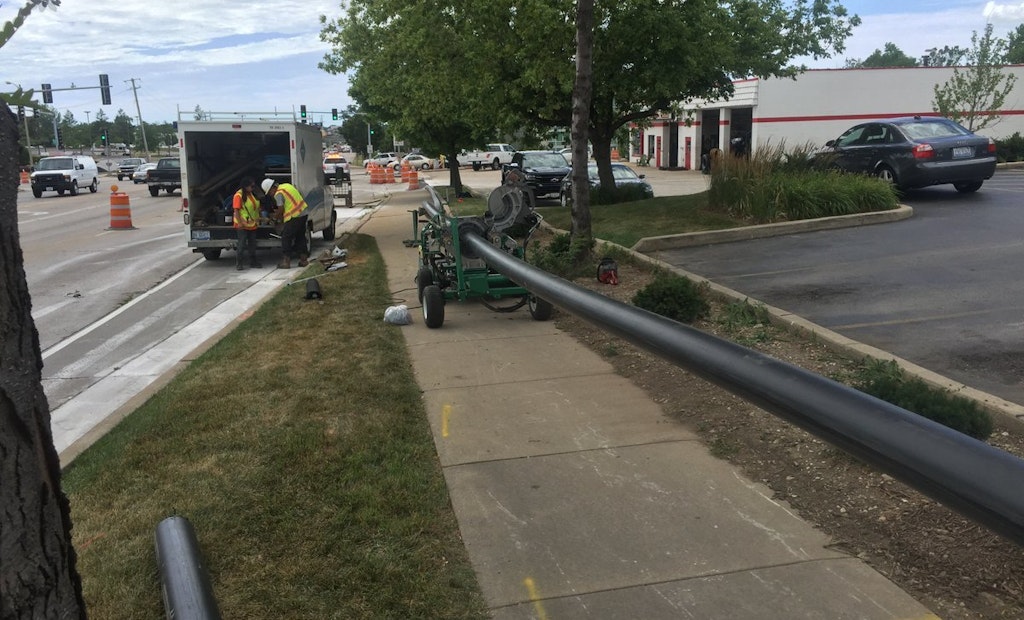
Good public communication was key to a water main relining project in Lombard, Illinois, because the project occurred on a busy roadway containing many small businesses. (Photo from village of Lombard)
Interested in Relining/Rehab?
Get Relining/Rehab articles, news and videos right in your inbox! Sign up now.
Relining/Rehab + Get AlertsWhen you’re working a big pipe rehab job for a municipal utility, there are of course a lot of technical aspects of the job itself you must keep track of. An equally important aspect is something a lot more simple — communicating with the public.
“The part that I think is critical for the success of any project is customer service,” says Shaun McKaigue, president and CEO of FER-PAL Infrastructure. “We spend a lot of time talking about mechanical properties and nerding out on engineering stuff, but what isn’t stressed a lot — or as much as it should be perhaps — is the huge advantage we can bring to the community with good customer service.”
FER-PAL worked with the village of Lombard, Illinois, on the relining of a water main using CIPP. The route for the work took contractors along one of the busiest roadways in Illinois. It also impacted hundreds of businesses — many of them small.
“For people who are decision-makers at the village or city level, many might decide a job’s success based on how many phone calls they received from members of the public,” McKaigue says. “If they didn’t receive very many, it was a successful job.”
While at the 2019 North American Society for Trenchless Technology No-Dig Show in Chicago this week, McKaigue highlighted his company’s Lombard job to a room full of municipal officials and contractors. He also went through the many things both the company and the village did to ease concerns from businesses located along the work route.
“There was an active website that was directed to those customers,” McKaigue says. “Lombard also had someone with boots on the ground, on the site. That person was instrumental in making sure those businesses were informed of what was going on, and it made a big difference.”
Keeping lines of communication open was a common theme throughout the No-Dig Show presentations.
“It’s one of the most critical things you can do if you are a municipality or a utility planning a project,” says Brian Martinez of the wastewater collections department in Pacifica, California. “You need to start with informing the public, whether it be homeowners or businesses, of what is going to be taking place and why it’s an important project.”
The Pedro Point Neighborhood Sewer Rehabilitation Project in Pacifica replaced 16,000 feet of sewer main using pipe bursting as part of the city’s multiyear capital improvement plan to successfully comply with a cease-and-desist order from the San Francisco Bay Regional Water Quality Control Board.
“We were having to go through residential neighborhoods and backyards to replace this sewer main,” says Jeffrey Tarantino, of Freyer & Laureta, the engineering firm working on the project with the city. “Communication was a must.”
Many municipalities and contractors shared the same tips when it came to public communication: Have dedicated websites, have a city official on the job site available to talk directly to residents and business owners, and plan public meetings so people have an opportunity to ask questions and get information.
“If you keep that customer involved and informed, basically it creates a much better experience for everyone,” McKaigue says.





